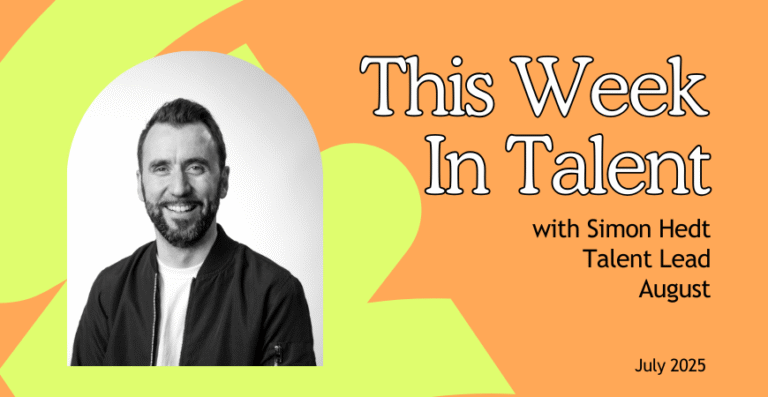There’s a culture and engagement problem right now. The remote/hybrid versus in-office debate still rages on. On top of this, people feel overworked and underappreciated. It’s no surprise then that only 20% of Aussies and 21% of Kiwis feel engaged at work (Gallup)
The challenge is that 47% of HR leaders don’t know how to drive change to achieve the desired culture in this environment (Top 5 Priorities for HR Leaders in 2024, Gartner).
Time to go beyond the traditional approaches
Let’s be honest, the traditional approaches to building culture don’t work. We need to think differently about how we engage people. We need to make work more exciting, more collaborative and more enriching. This means we need to try different things to get there. New ways of working and a different way to engage the diverse nature of our workforce. Something less boring and less serious.
And we don’t need to look far to get inspiration. Whilst film and music get a lot of widespread media coverage and attention, the gaming industry dwarfs them both, bringing in more dollars than them combined (US$184.4bn versus US$124.6bn, BCG & Statista). And there is a good reason why – games create engagement in abundance. We can learn and apply a lot from games when it comes to building a more engaged workplace.
What does gamification in the workplace look like?
Gamification is the application of game elements in a non-game setting. Gamification works as it taps into a whole range of intrinsic and extrinsic motivators. The common mistake is applying only surface-level gamification (think points, leaderboards and badges). The bigger opportunity for gamification is taking the deeper principles, like playing with others, growth, mastery, choice and novelty and applying these in the workplace.
I work with P&C teams to improve culture using gamification. I find gamification isn’t for every organisation. It works best for those who want a fresh, less ‘corporate’ way of doing things. Organisations that typically value collaboration, fun, play, creativity and diversity.
Gamification can be embedded into every aspect of the employee experience. Here are some examples to get the playful juices flowing.
Attraction
Realistic Job Previews are a highly effective (and underutilised) way of attracting and screening potential candidates for a role. Gamification can breathe even more life into Realistic Job Previews. Short (well-designed) quizzes that potential candidates take before applying are a great way to gamify the pre-application stage and can also add some pizzazz to a careers site. Think of those classic interactive Buzzfeed quizzes that tell you which Succession character you are but instead applied to your own critical roles. You can go a step further and turn this into an entire campaign. One of my favourite examples of this is the award-winning Australian Secret Intelligence Service ‘The Most Interesting Job Interview’ initiative – immersive video and gamification cleverly disguising a screening questionnaire.
Recruitment
Personality tests and cognitive ability tests have all been gamified to make them more engaging to complete (for example, Arctic Shores and Equalture). A fun implementation you can try for yourself for free is the Redbull Wingfinder assessment.
An easy way to bring gamification into your recruitment process is via interviews and case study exercises. A few years ago, we designed a gamified interview process that presented candidates with all the interview questions on cards and gave them total control and choice around how they tackled the interview. The feedback from candidates for this process was incredible. For Case Study style exercises, you can introduce gamified components and activities instead of presenting all the case information in a regular report or document.
Onboarding
Onboarding often focuses too much on task-based activities (compliance, e-learning and the like). And even the regular round-robin of meet and greets can feel a little transactional. Combining concepts like coffee roulette (https://wheelofnames.com/ is excellent for this) together with a lighter icebreaker question can break up this monotony and bring some much-needed novelty into the mix. Gamifying traditional e-learning content using tools like EdApp can make a difference in the onboarding experience too.
Learning, Development and Training
Game-based learning is the most common application of gamification in a workplace context. This typically involves building serious games that draw out key learning outcomes in a highly experiential and collaborative way. This space has a lot of good examples outside of work, too – I had a blast learning the basics of bass guitar by using Rocksmith.
This is an area that makes greater use of technology too. Virtual Reality (VR) is super high on immersion, and this makes it very powerful for building skills around empathy and understanding. It’s also amazing to use for training situations that are hard (or unsafe) to replicate in real life (fires, disasters, dangerous construction sites etc.).
Augmented Reality (AR) is a particularly exciting technology when applied to on-the-job learning. Devices like the HoloLens (and, more recently, Apple Vision Pro) offer powerful use cases in industries like construction and medicine. The official HoloLens video showing AR in action brings us closer to the world of Minority Report.
VR/AR plus gamification is a powerful combo – as you stack the engagement benefits they all offer. You can have people complete training in a fully simulated immersive environment with points for every action undertaken and highly personalised feedback for improvement (as shown here by Atensi).
Culture & Engagement
This is the space we play in at In The Game. We use gamification to help teams have deeper and more meaningful conversations about culture and action planning. We’ve built a digital board game and use mechanics like voting, conversational turn-taking and mixed-mode responses to engage everyone in the process of culture-building. We find gamification helps create psychological safety and allows for lots of different thinking styles to get in on the conversation.
When it comes to using gamification in the culture-building space, the applications are broad. Engagement action planning, talking about values, regular retrospectives, and team development sessions all provide opportunities to infuse gamification to drive better quality conversation.
Now it’s your turn
The best way to get started with gamification is to pick a specific part of the employee experience to experiment with and start small. Look at how gamification could be introduced at both a surface level and a deeper level in a way that aligns with your purpose and values.
Then, build out a prototype you can playtest with. Playtesting is key with gamification, as often the specific mechanics implemented can result in some unintended consequences. We’ve seen this issue a number of times in our playtesting with how something like competition is used. Dial it up too much, and things become more cutthroat and can really put people off. Once playtesting is done, you’ll have a good sense of appetite and effectiveness and a platform to build on.
Once you get started with gamification, you’ll have a flurry of different ideas for how to apply it. Gamification is a fun space to play in, and there are so many possible applications, and it’s the perfect antidote to how boring work has become for many.






